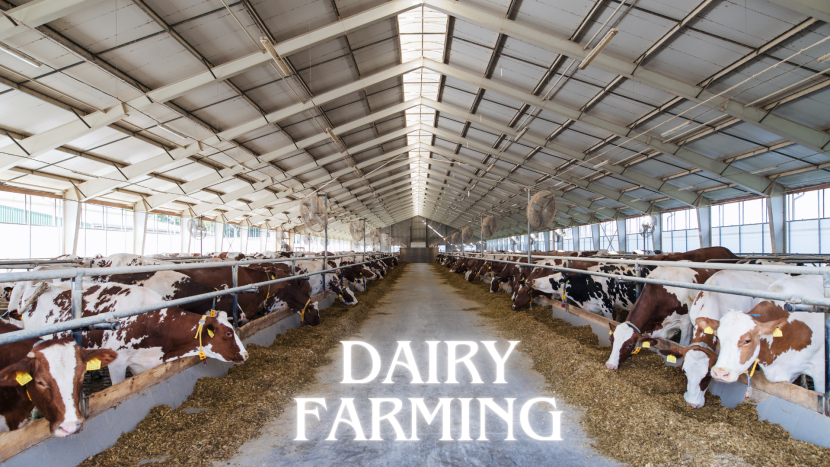With the rising demand for milk and dairy products in India and globally, dairy farming remains one of the most lucrative agribusiness ventures in 2025. From providing a steady income source to ensuring rural employment, a well-managed dairy business can deliver long-term profits and social impact.
If you’re wondering how to get started, this comprehensive guide walks you through every essential step, right from planning to profit.
Why Dairy Farming Is Profitable in 2025
The dairy sector in India contributes over 4% to the GDP and supports millions of farmers. According to NDDB, India remains the world’s largest producer and consumer of milk. With urbanization and growing health awareness, demand for fresh, organic, and value-added dairy products (like paneer, curd, and ghee) is steadily rising.
Key Trends in 2025:
- Rising interest in A2 milk and indigenous breeds
- Government subsidies for small-scale dairy entrepreneurs
- Increased access to cold chain and logistics infrastructure
- High profitability from value-added dairy products
Step 1: Decide on Your Scale and Model
First, choose your business model:
- Small-scale: 2–10 cows or buffalo
- Medium-scale: 10–50 animals
- Commercial scale: 50+ animals with automated systems
You can operate :
You can run a dairy farming business in several ways, based on your resources and goals. One option is to operate independently and supply fresh milk to the local market for better profits and direct engagement. Alternatively, partnering with co-operatives like Amul or Mother Dairy offers steady demand and easy distribution. For higher income potential, setting up a processing unit to produce value-added products such as paneer, ghee, or organic milk can be a smart move, especially given the rising demand for health-focused dairy products.
Step 2: Set Up Proper Infrastructure
Set up proper infrastructure, as it plays a crucial role in maintaining animal health and maximizing productivity. Ensure your dairy farm has a clean, shaded, and well-ventilated shed to protect animals from extreme weather. Designate separate areas for feeding, milking, and rearing calves to maintain hygiene and prevent stress. Install an efficient drainage and waste disposal system to maintain a clean and disease-free environment. Additionally, include water troughs for hydration and well-organized storage units for fodder to ensure a consistent and hygienic feeding routine.
💡 Tip: Use locally available materials to reduce setup costs.
Step 3: Select High-Yield Dairy Breeds
Choosing the right cattle or buffalo breed determines milk output and disease resistance.
Popular Indian Cow Breeds:

Top Buffalo Breeds:

Opt for A2 milk-producing cows if you’re targeting the premium health market.
Step 4: Manage Feed & Nutrition
Balanced nutrition keeps your animals healthy and productive. A dairy animal’s diet should include:
- Green fodder (lucerne, napier)
- Dry fodder (wheat straw, hay)
- Concentrates (grains, oil cakes, vitamins)

Use mineral mixtures and clean drinking water to improve milk yield and animal immunity.
📘 Learn More: Indian Council of Agricultural Research – Fodder & Nutrition Guidelines
Step 5: Focus on Animal Health & Hygiene
Focus on animal health and hygiene, as it is essential for maintaining milk quality and preventing diseases. Regular veterinary check-ups, timely vaccinations, and proper sanitation practices significantly reduce the risk of infections. Key practices include deworming the animals every six months and vaccinating them against common diseases such as Foot-and-Mouth Disease (FMD), Black Quarter (BQ), and Hemorrhagic Septicemia (HS). It’s also important to wash the udder before each milking session to maintain hygiene and prevent contamination. Additionally, implement regular pest control measures in and around the shed to create a clean and healthy environment for the animals.
Step 6: Understand the Costs and Earnings
Basic Cost Breakdown (for 10 animals):
- Shed construction: ₹1.5–2 lakh
- Animal purchase: ₹4–6 lakh
- Feed & care (monthly): ₹15,000–20,000
- Labor & utilities: ₹10,000
Average income: ₹2,000–3,000/month per animal (after expenses)
🧮 Pro tip: Start small, reinvest profits, and gradually scale.
Step 7: Tap into Government Schemes & Loans
In 2025, multiple government schemes promote dairy entrepreneurship:
- Dairy Entrepreneurship Development Scheme (DEDS)
- Subsidized loans via NABARD
🔗 Visit NABARD’s website for updates
Final Thoughts: Is Dairy Farming Worth It?
Absolutely—if done with planning, patience, and passion. In 2025, the dairy sector offers new opportunities for both rural and urban entrepreneurs. With the right knowledge, healthy animals, and smart marketing, you can build a thriving dairy business that provides consistent income for years.




